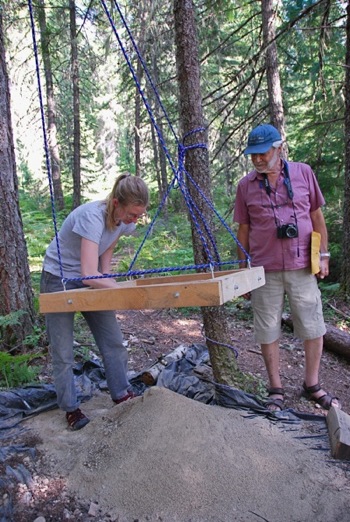RACISM ALIVE AND WELL IN CANADA — and that’s one reason to come to the Revelstoke Museum July 29 to hear an American archeologist talk about pit houses of the Sinixt, or Lakes People, who once lived along the Columbia River including Revelstoke.

by Leslie Savage
Barack Obama’s “Trayvon could have been me” speech last week has resonated throughout the United States, but it should also knock heads here in Canada, where racism is alive and well too.
The Revelstoke Multiculturalism Society can be commended for its efforts towards racial acceptance and inclusivity in Revelstoke. But in Canada as a whole, the long-standing racial divide between aboriginal people and newcomers (those from Europe, Asia, Africa and Australia arrived in the past 500 years) prevails in forms institutionalized as well as informal.

Consider what it means, for instance, when we read that an average of 25 per cent of the Canadian prison population today is aboriginal (4% of the adult population is indigenous.) Infant mortality rates are between 150 and 400 per cent (depending on the region) higher among Canada’s First Nations than in the general population (only two provinces allow the collection of such data — itself a telling statistic.) Half of aboriginal children in Canada live in poverty — two-thirds in Manitoba and Saskatchewan. These figures show that the Canadian government’s policy of assimilation, embedded in the Indian Act of Canada, has failed miserably. It’s not that any of us deliberately discriminate against First Nations people. But systemic racism continues.
I’ve just returned from Ottawa, where the National Gallery is showing Sakahàn, a big exhibit of international aboriginal artwork. Issues of alienation and oppression fill this show of indigenous peoples as far-flung as Finland and Australia. The colonizing world has done little to put a stop to the racism that stigmatizes First Peoples the world over. Whether it’s the Han Chinese in Tibet or 5th generation Canadians like me, we need to do more to finally recognize the territorial and moral rights of peoples whose collapsed civilizations have left individuals and small societies stranded and abandoned in today’s worlds. One thought-provoking art piece is a huge painting with graffiti-like words printed in caps across it: Australian Richard Bell’s Life on a Mission, is a large painting says I AM NOT A NOBLE SAVAGE, suggesting that First Peoples are not icons of the past but living individuals in today’s world, forging a culture that is different from the past — just as the rest of us are doing.

As an exercise, list the things your grandmother didn’t have as part of the material culture you know.
In Revelstoke, it was the Sinixt First Nation who mainly lived along the shores of the Columbia River from Kettle Falls in what is now Washington State northwards as far as Mica. In 1976, Christopher Turnbull, the archeologist who worked along the Columbia, documented the evidence indigenous camps around or near the mouth of Tonkawatla Creek, near what is now Big Eddy, as well as at Begbie Falls, Arrowhead, Galena Bay and Beaton. By the time Turnbull did his digging, the dams along the Columbia (Keenleyside opened in 1968) had already eradicated many possible archeological sites. However, some sites do still exist.
Protecting these may conflict with development issues. However, indigenous rights to the land in many areas of BC have never been extinguished, and title rights should be explored and settled before development and further eradication of aboriginal heritage occurs. Many possible sites have never been thoroughly excavated, and they should be. After that, they should be returned to the Sinixt Nation — but first, the 1956 Canadian legislation declaring the Sinixt extinct must be reversed. For a history of these issues, see www. sinixtnation.org.

The writer Wade Davis (The Wayfinders and others: www.daviswade.com) argues that with the loss of every ancient language we lose a whole world of knowledge. Not only do ancient cultures enhance our appreciation of our own, but they may offer ways of understanding at this time of dire need to protect our planet.
Next week, archeologist, Dr. Nathan Goodale of Hamilton College in New York State, will be in Revelstoke to talk about his excavation of pit houses at Lemon Creek, along the south Slocan River, at the Revelstoke Museum, July 29 at 7 pm.



